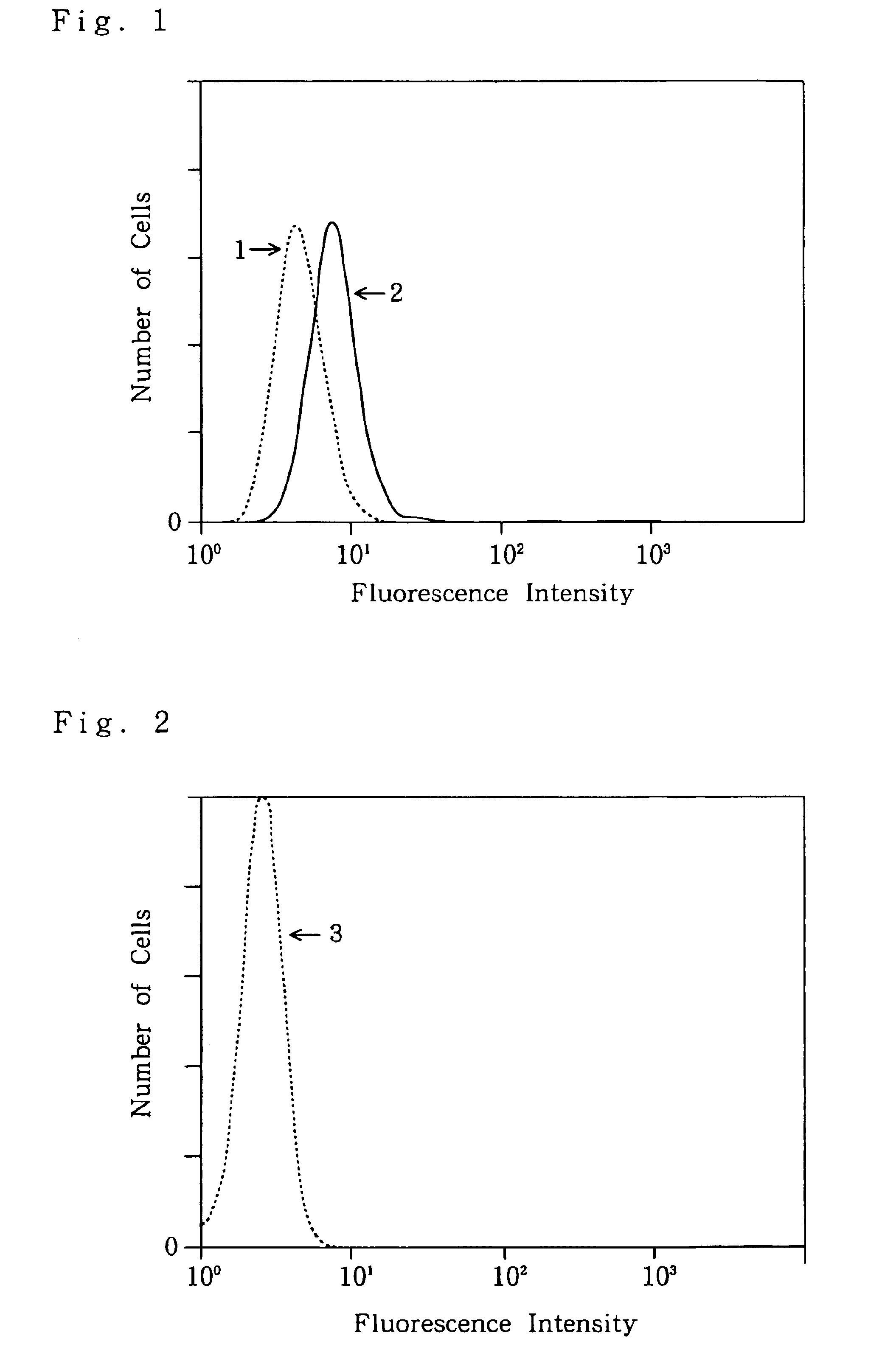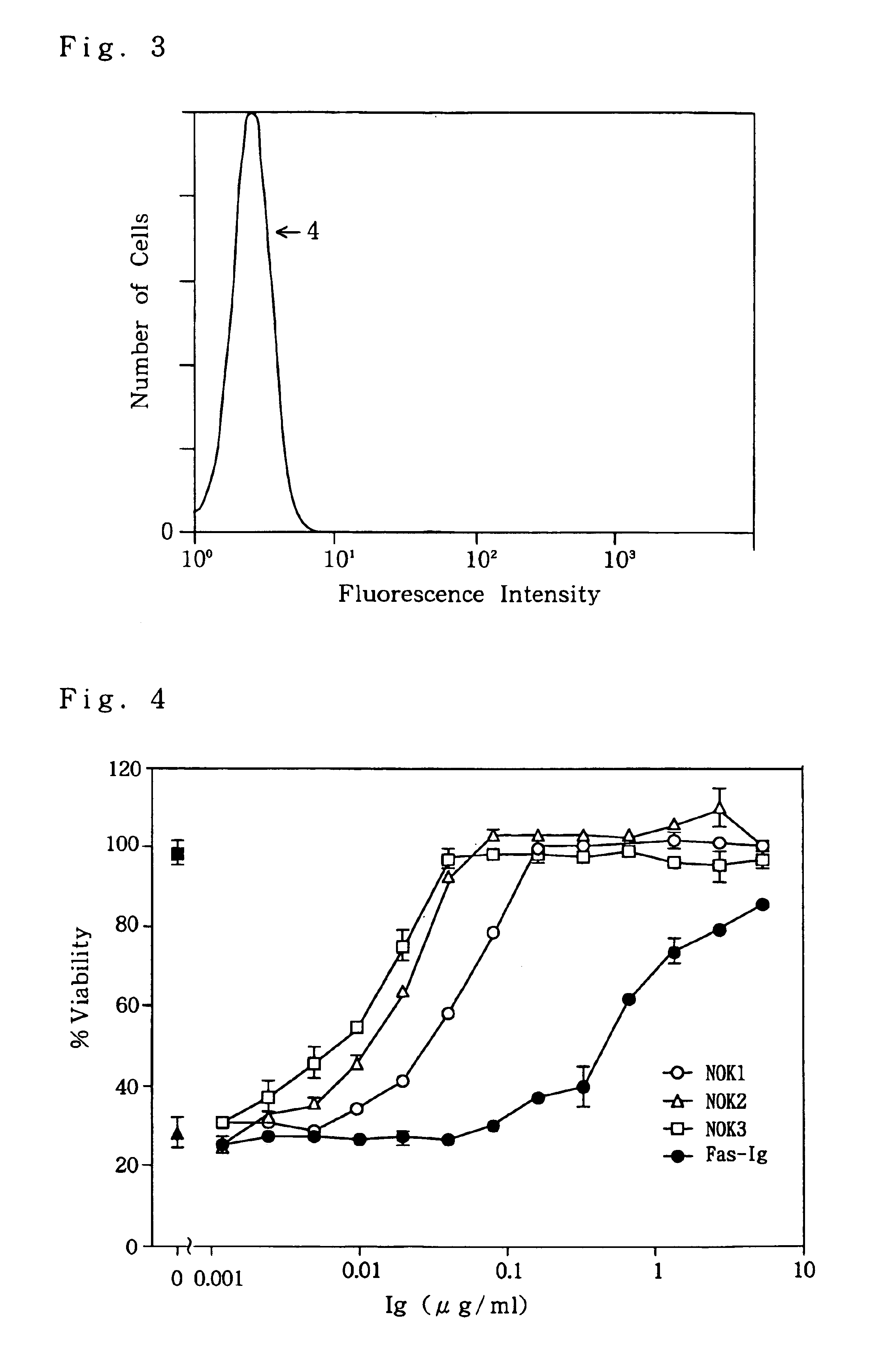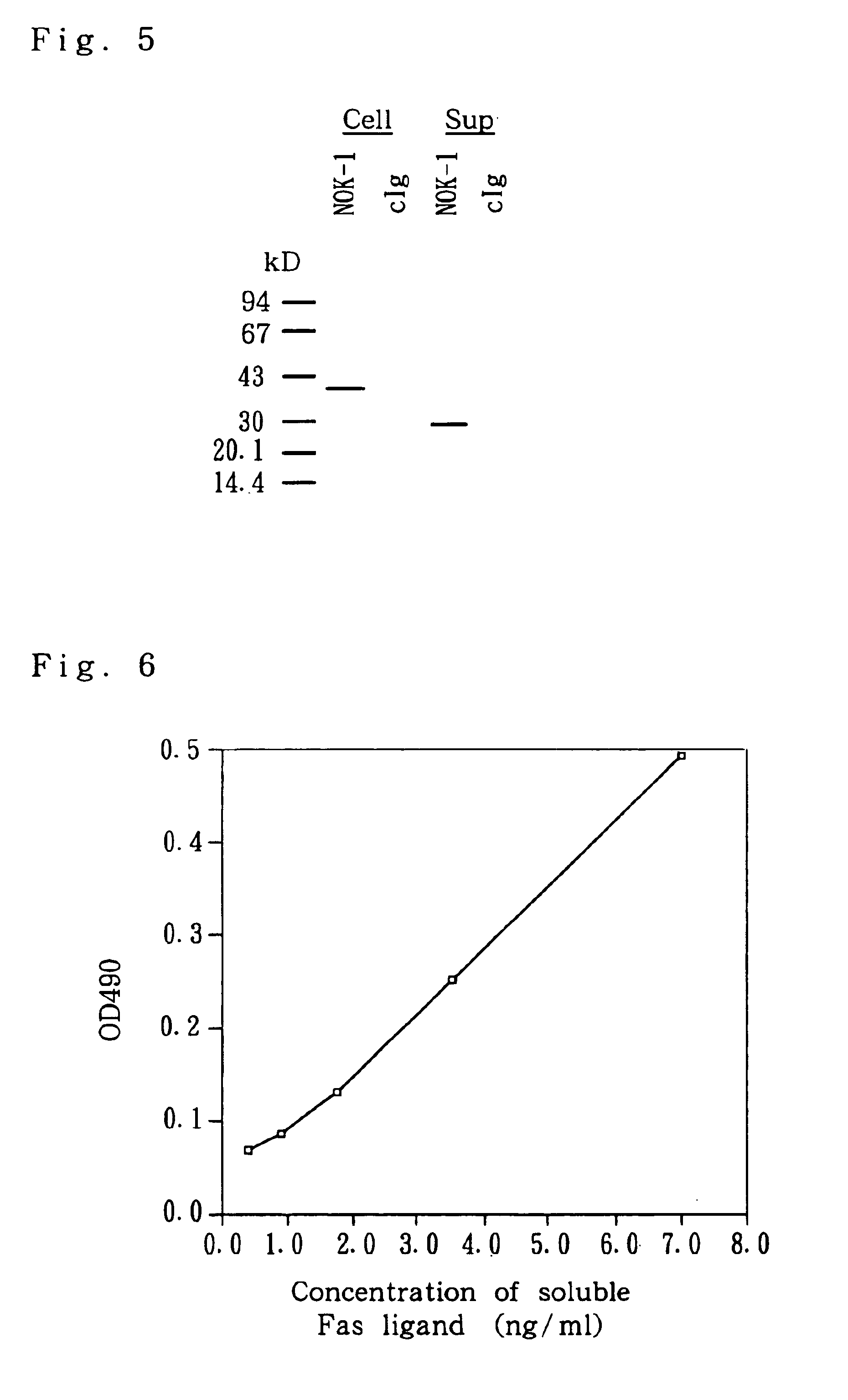Monoclonal antibody reacting specifically reacting with Fas ligand and production process thereof
a technology of monoclonal antibodies and ligands, applied in the field of monoclonal antibodies, can solve the problems of not knowing whether the cell death of development and neurocytes is caused by cell death, and it takes formidable experiments to actually confirm, so as to inhibit the physiological reaction
- Summary
- Abstract
- Description
- Claims
- Application Information
AI Technical Summary
Benefits of technology
Problems solved by technology
Method used
Image
Examples
example 1
Preparation and Characterization of Monoclonal Antibodies
(1) Isolation of Fas Ligand Gene
{circle around (1)} Preparation of Primers
[0134]A human Fas ligand gene was isolated on the basis of the report by Nagata et al. More specifically, Xho I-5′ FasL obtained by adding a sequence of 18mers of the 5′ end of a human Fas ligand to a sequence of the Xho-I site on the 5′ end side of human Fas ligand cDNA, and Not1-3′ FasL obtained by adding a sequence of 18mers of the 3′ end of a human Fas ligand to a sequence of the Not1 site on the 3′ end side of human Fas ligand cDNA were separately subjected to DNA synthesis using Model 392 DNA / RNA synthesizer (manufactured by ABI) on a scale of 0.2 μmol. The product DNAs were purified in accordance with the protocol to prepare primers for PCR.
② Preparation of Template of Fas Ligand cDNA
[0135]A template was prepared from human killer T cells in which a human Fas ligand had been expressed. More specifically, human killer T cells were activated with PM...
example 2
Characterization of Monoclonal Antibodies
[0170]The characteristics of the respective monoclonal antibodies secreted by the hybridomas NOK1 to NOK3 were further investigated by the following methods.
(1) Preparation of Purified Antibodies
[0171]① Each of the hybridomas NOK1 to NOK3 was proliferated to 3×107 cells in an RPMI 1640 medium containing 10% FCS. The 3×107 cells were prepared on a scale that 30 ml of the culture solution was placed in a 75-cm2 flask (product of Falcon) to conduct cell culture. Specifically, the culture was started at a concentration of 2×105 cells / ml, and cells were collected when reaching a concentration of 1×106 cells / ml.
[0172]② In each of NOK1 to NOK3, the hybridoma thus collected was suspended in 1.5 ml of PBS, and 0.5 ml (corresponding to 1×10 7 cells) of the suspension was intraperitoneally administered to nude mice. After breeding for 10 days, ascites fluid stored in their abdominal cavities was collected.
[0173]{circle around (3)} The amounts of the asc...
example 3
Immunoprecipitation of Fas Ligand Molecule
[0187]Whether the monoclonal antibody against Fas ligand thus obtained can immunoprecipitate Fas ligand molecules or not was confirmed.
[0188]① Fas ligand-L5178Y cells, in which a human Fas ligand had been transfected, were adjusted with 1 ml of a 10% FCS•DME medium containing neither cysteine nor methionine so as to give a concentration of 1×106 cells / ml. 35S-CyS / Met (Translabel; product of ICN Biomedical Inc.) was added to this cell solution so as to give a concentration of 3.7 MBq / ml to culture the cells at 37° C. for 16 hours in a 24-well plate. Thereafter, a culture supernatant was collected, and a usual 10% FCS•DME medium containing both cysteine and methionine was added to the cells to culture them further for 4 hours.
[0189]{circle around (2)} After collecting cells, 1 ml of a lytic solution (0.5% Triton X-100, 20 mM Tris-HCl pH 7.6, 150 mM NaCl, 10 μM PMSF, 50 μg / ml trypsin inhibitor) was added to lyse the cells. The lysis was carried...
PUM
| Property | Measurement | Unit |
|---|---|---|
| Temperature | aaaaa | aaaaa |
| Fraction | aaaaa | aaaaa |
| Time | aaaaa | aaaaa |
Abstract
Description
Claims
Application Information
 Login to View More
Login to View More - R&D
- Intellectual Property
- Life Sciences
- Materials
- Tech Scout
- Unparalleled Data Quality
- Higher Quality Content
- 60% Fewer Hallucinations
Browse by: Latest US Patents, China's latest patents, Technical Efficacy Thesaurus, Application Domain, Technology Topic, Popular Technical Reports.
© 2025 PatSnap. All rights reserved.Legal|Privacy policy|Modern Slavery Act Transparency Statement|Sitemap|About US| Contact US: help@patsnap.com



